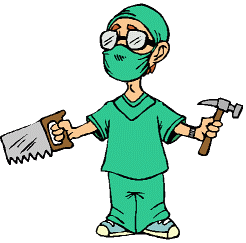| What is technology??
Technology is a body of knowledge devoted to creating tools,
processing actions and extracting of materials. This is
from an article that gives a great overview:
http://www.useoftechnology.com/what-is-technology/
Please take a few minutes and read this
article. It will give you an excellent introduction.
Basically,
humans encounter problems and find solutions.
| |
Technology refers both to the products created by humans
 |
and the methods
used to create those products.
 |
|
| |
|
|
|
These may be tools,
machines, appliances (and how they are made), but in its
strictest sense, technology is the product of applied knowledge
and creativity, or EVERYTHING THAT IS MADE BY HUMANS.
What about educational technology?

Educational
technology is used to improve the way we learn.
So,
educational technology is the product of
applied knowledge and creativity used to improve the way we
learn.
Larry Cuban said educational technology is
"Any device
available to teachers for use in instructing students in a more
efficient and stimulating manner than the sole use of the
teacher's voice."
That would include chalkboards/chalk, textbooks, flashcards,
and the mundane list goes on.

Well, we all know that this course is not about using tables,
chairs, pencils, and chalkboards in a music classroom, so let's
narrow down the definition just a bit.
In other words,
let's describe technology in working terms as it will be used in
this course.
Words that accompany discussions of educational technology
usually include "electronic" and "digital."
Your text uses "technology" to refer to
"computers and related digital tools
that can be used to help humans develop an understanding of
concepts and skills necessary to create, perform, and respond to
music."
Technology related to music usually includes electronic
instruments, recording equipment, sequencers, and software and
hardware that apply to this type of equipment.
It can also
include applications to be run on computers, tablets, and
phones; again, to enable making and enjoying music.
|